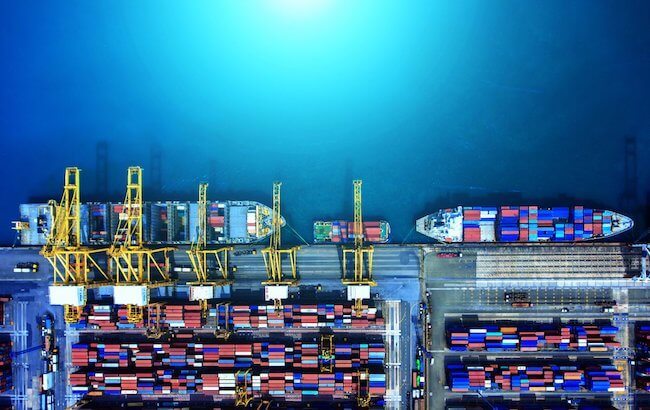
[ad_1]

Hopes among cargo owners for relief from record ocean-freight rates have started fading as the demand for China-made goods is exponentially rising, threatening to overwhelm operations of container ships.
Shipowners, who have been used to decades of overcapacity, did not order new vessels in 2020 as the pandemic had upended supply chains. Strict measures like enforcement of complete lockdown to curb the spread of the deadly virus caused trade to tumble early in 2020. However, a rebound in consumer demand had started last summer and gained momentum this year.
A senior executive from a Korean shipyard said that in the pre-Covid times and based on the available capacity and limited new orders, a balance would have been struck between demand and supply.

Image Credits: DromonBS – Twitter
Besides, freight rates across main trade routes are also expected to increase. However, the waves of Covid shook the supply chains, and freight rates shot up. Currently, the focus is on adding more ships.
The daily rates from China to the US West Coast have shot up 66% from January 2021 and over 400% since early 2020. The spot rates have risen. In the same period, the rates for Asia to Northern Europe are up 92% and 480%, respectively.
Jonathan Roach, a container analyst has said that the pandemic has been a massive boost for container vessels with a supercycle that is expected to continue. The rates are ballistic and it is unlikely to change before next year.
The need for space on container vessels has been forwarded by retailers like Walmart Inc. and Amazon.com Inc. These companies have been rushing to stock up after a year of pandemic-related supply-chain disruptions. The demand has resulted in bottlenecks at ports, raising the prices for manufactured goods and commodities.
We have run out of bikinis and summer sandals and will probably run out of coats and boots when winter is here, said Anna Moore, a manager at a clothing and accessories boutique at a mall in White Plains, NY. She also added that the shipping costs have almost tripled from 2020 but the merchandise is up to 45 days late.
The need to replenish the depleted inventories has made it hard for the cargo space to find and spurred profit gains at operators, including CMA CGM SA, A.P. Moller-Maersk A/S, and Hapag-Lloyd AG. Several shipping lines are refreshing and expanding their fleets.
Within the initial five months of 2021, more than 200 container ships worth up to $16.3 billion had been added to the global order book. The number of ships last year was 120 and valued at $8.8 billion and 114 worth $6.9 billion in 2019.
The ships on order are expected to add a carrying capacity that adds up to over five million containers, measured in 20-foot equivalent units, a standard maritime industry measure. From 2009, this is the highest order tally.
But the bulk of new ships won’t be delivered till 2023. The latest study reveals that the container-shipping demand is expected to rise by 8% this year, double the rate of new growth capacity.
Bottlenecks at ports of Shanghai, Rotterdam, and Los Angeles have disrupted schedule reliability and capacity on the water owing to long waits to load and unload cargo.
Reports from a sea-intelligence major in Denmark reveals that in the first five months of this year, over 400 ships on the trans-Pacific trade lanes and about 140 from Asia to Europe had been late by over two weeks. The numbers registered were 388 and 69 respectively, on the same routes, combined from 2012 to 2020.
Reference: livemint.com
[ad_2]
This article has been posted as is from Source